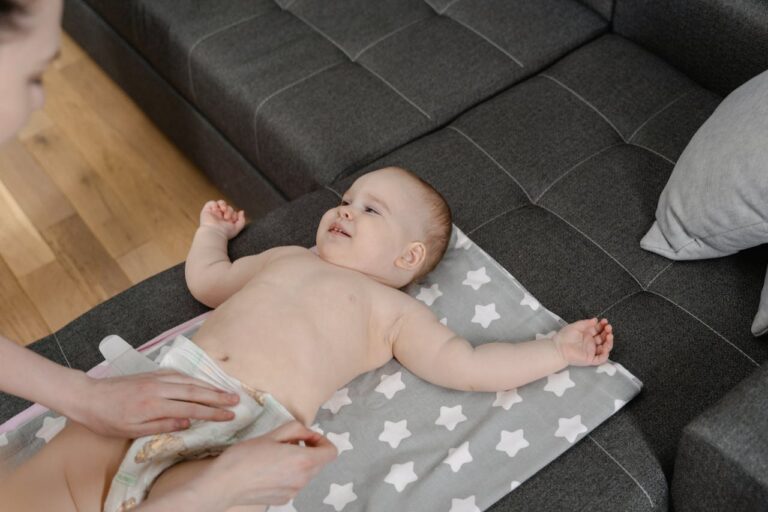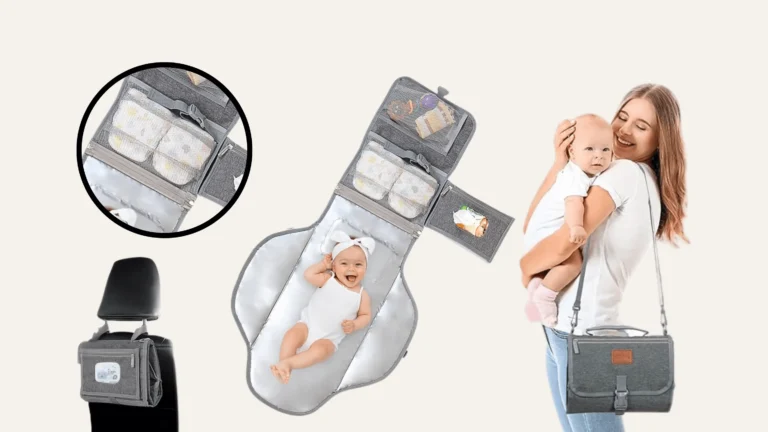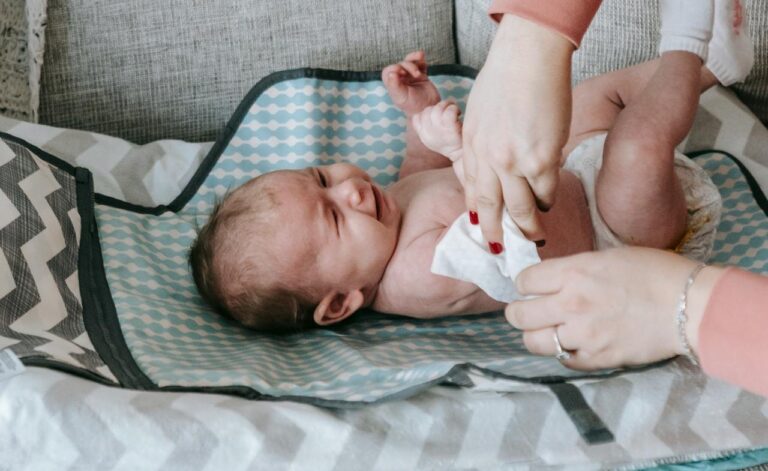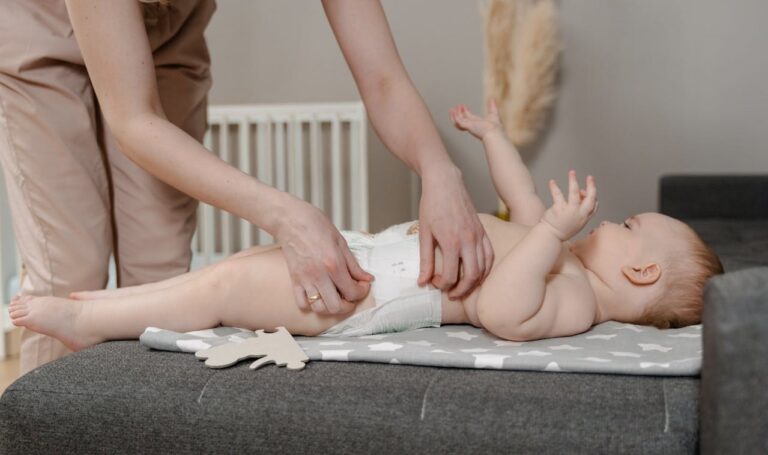Baby Changing Pad Sizes Guide: Get the Perfect Fit
The Baby Changing pad is truly one of those things that, during the preparation for a new baby, doesn’t strike one as a particularly complex item of consumption. However, several essential factors include size, thickness, and whether it will fit your changing table or nursery.
This guide will discuss every type of baby changing pad, the standard sizes, and some of the most important features you must look for when purchasing one for your little one.
Table of Contents
Standard Sizes of Baby Changing Pads:
Many baby changing pads come in standard sizes; however, sizes differ from manufacturer to manufacturer. A regular changing pad dimensions would be approximately 16 inches in width and 32 inches in length to accommodate most changing tables.
However, some pads can be ordered in smaller or greater sizes depending on the size of the room and the user’s desire.
Regular Size:
16 x 32 inches, perfect for most standard changing tables.
Compact Size:
Most common sizes are about 14” x 26” and are mainly for small rooms or when travelling.
Oversized Pads:
Up to 18 x 36 inches, there is more space for babies born bigger or squiggly.
Importance of Choosing the Right Size:
The choice of size is not only about fitting the pad on the changing table. It is also about the baby’s comfort and safety while on the diaper changing table. If the pad is small, the support may not be enough; if it is very big, it may tilt or hang over the changing area.
Key Factors to Consider:
- Adaptability to your changing table
- Mobility if intending to use it on various surfaces
- The sturdiness while it’s positioned on one or several surfaces
Types of Baby Changing Pads and Their Dimensions:
Various changing pad types vary in size and function and are usually designed to suit every need. Here are the most common types:
1: Contoured Changing Pads:
Contoured pads have over-curved edges to support the baby and keep it confined and safe during its change. They are commonly coated with a non-slip surface and have straps to help secure the baby.
Standard Size:
16 x 32 inches
Benefits:
- Safe fit
- Active babies compatible
- Compatible with most changing tables
2: Contemporary or Carried Changing Tables
They are small and portable, and most can be folded, enabling one to change to a different pad whenever needed. Most varieties are relatively compact, fitting into compact and mini diaper bags.
Common Size:
14 x 26 inches
Benefits:
- Small
- Portable
- Takes up little space
- Does not take up room in a diaper bag
3: Disposable Changing Pads
Disposable pads are usually smaller and used only once, so they are very useful during diaper changes, especially in public places or while on a journey.
Typical Size:
13 x 18 inches
Benefits:
- Clean
- Comfortable
- Disposable
- It can be used over and over again
4: Extra-Large Changing Pads
These pads provide extra width space, usually necessary where large or physically active babies are involved. These models are unsuitable for changing tables but well suited for the floor type.
Typical Size:
18 x 36 inches
Benefits:
- More space for the baby’s movement, which may be perfect for parents who prefer changing their baby on the bed or the floor
Materials and Thickness of Changing Pads:
The pad’s thickness and material influence its comfort and wear resistance as a changing surface. Here are some popular materials:
Foam Pads:
Light in nature and give a bouncy surface to stand or walk on.
Memory Foam:
Also provides a cushion and hugs the body shape of a baby.
Plastic-coated or Waterproof Covers:
Easy to clean and wipe down.
Organic Cotton Covers:
Recommended for use by people with sensitive skin, it helps avoid the breakout of skin rashes.
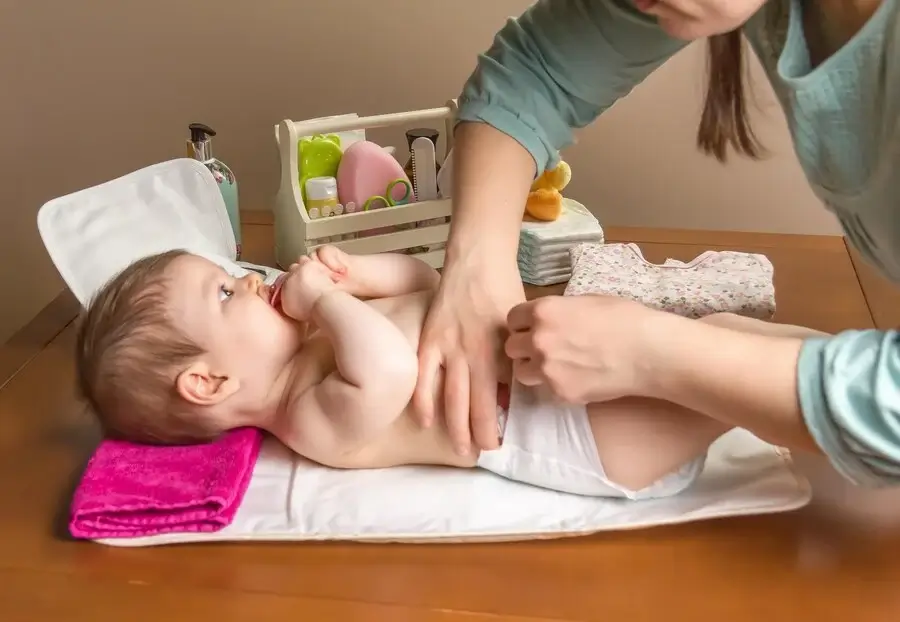
Thickness Options for Baby Changing Pads:
The thickness variation of the changing pad is normally between 1 and 3 inches. Thicker pads give better support, and if you tend to change your baby often on relatively rigid surfaces, then thicker pads could be useful.
Key Features to Look for in a Baby Changing Pad:
However, the following features should be considered when choosing the changing pad to provide convenience to both the mother and the baby. Here’s what to keep in mind:
Non-Slip Base: Helps keep the pad in position when changing the diaper.
Safety Straps: Most pads come fitted with straps to hold the baby and prevent the baby from rolling off.
Waterproof Surface: This feature makes cleaning easier if the ones used are waterproof or water-resistant.
Machine-Washable Cover: Some of these pads have covers that can be washed and removed to increase the level of hygiene.
How to Measure and Choose the Right Changing Pad for Your Setup:
Measure Your Changing Table:
To begin with, check the measures of the length, as well as the width of the future changing table or surface.
Account for Extra Space:
Think about the height and contour of the pad. It should fit fine at the table and will not move around.
Check Safety Features:
For easier positioning and fewer chances of slipping, try getting one with a non-slip backing or extra adhesive.
Tips for Maintaining and Cleaning Changing Pads:
Here are some of the best tips for maintaining and cleaning changing pads to keep your changing pad in good condition:
Regular Cleaning:
Clean with a baby gentle cleaner that is EPA-listed and approved for deep cleaning and disinfecting.
Use a Cover:
At least, one may find a helpful cover to prevent staining or even spilling of liquids, which may cause staining on the pad.
Check for Wear:
This way, one should always inspect the pad to see if there are any signs of tears or that it has worn out.
Pros and Cons of Various Changing Pad Sizes:
Standard-Sized Pads:
Pros:
It measures 27 1/2 inches, can easily fit most changing tables and very easy to get a hold of.
Cons:
Not suitable for large-sized babies.
Compact or Travel-Sized Pads:
Pros:
Portable, ideal for travel.
Cons:
Restricted mobility of baby.
Oversized Pads:
Pros:
It gives more ground inch, which is perfect for changing floors.
Cons:
Not for use on standard tables.
FAQs:
Conclusion: Understanding Baby Changing Pad Sizes
Selecting the appropriate baby changing pad will help make the change process easier, more convenient, and, more importantly, safer for both the baby and the parent.
Familiarize yourself with all the existing sizes, types, and additional features to help you choose the most appropriate pad.
Remember to measure the changing area, consider safety aspects such as the height of a pad, and opt for a product that is easy to wash and sanitize.
Selecting a good diaper will make your baby tender and leave you relaxed while taking care of your little angel.


